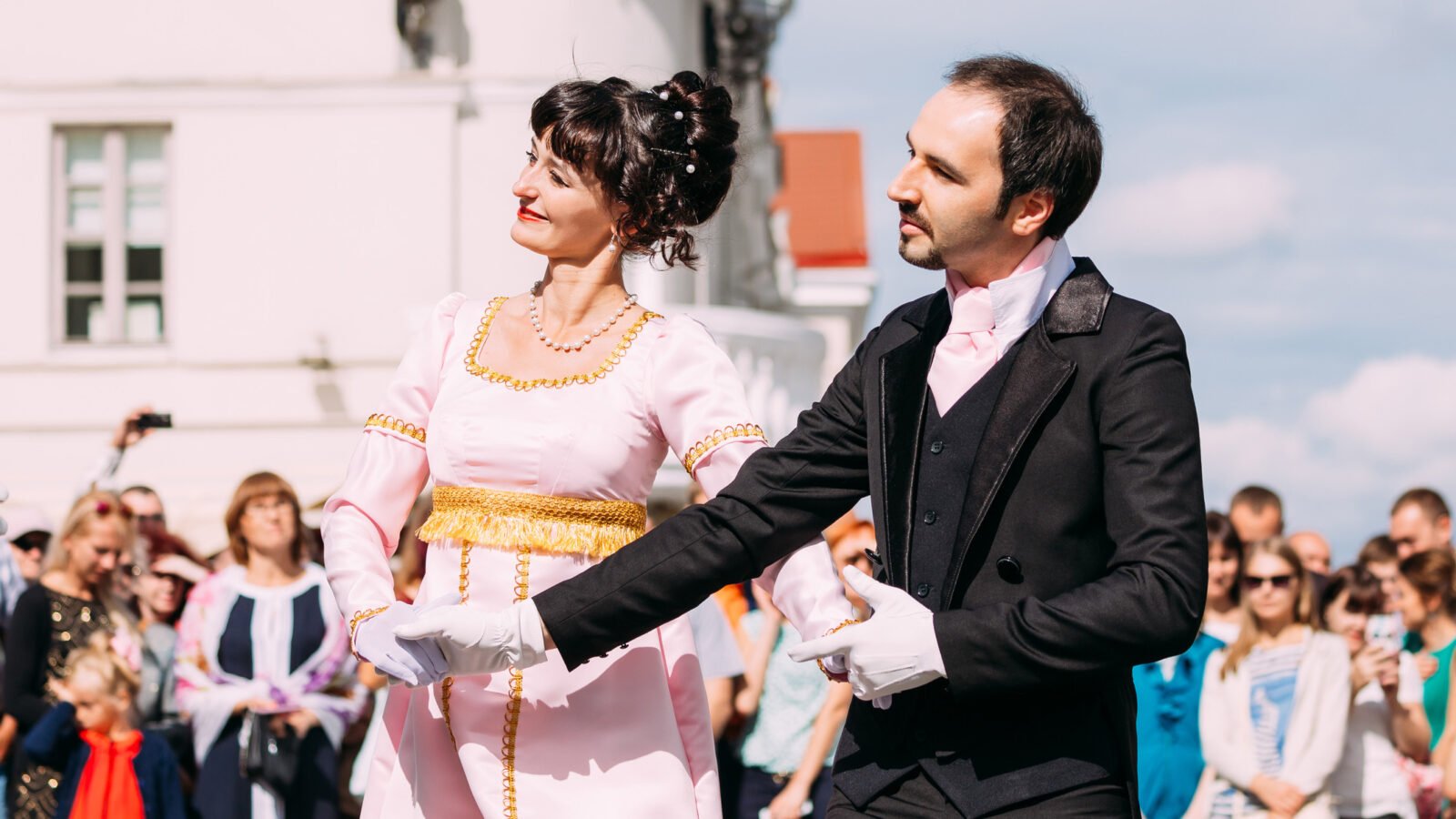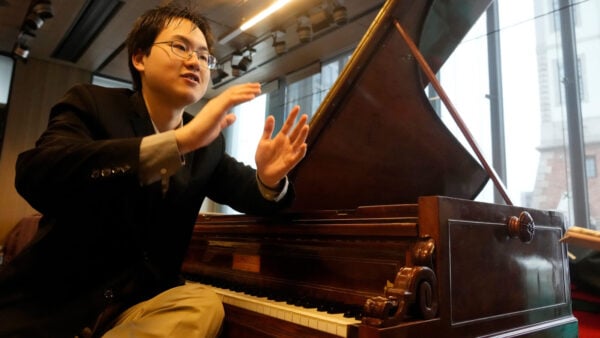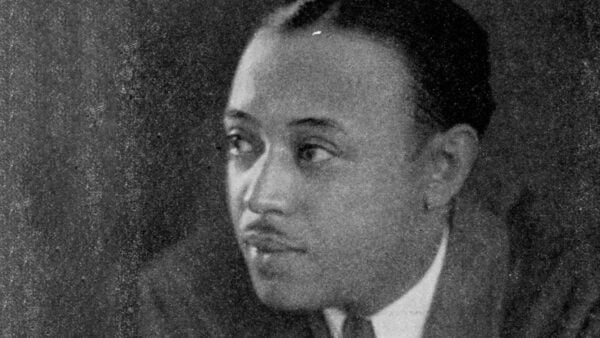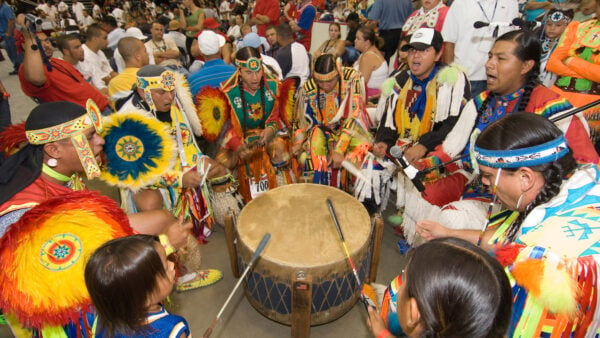
A couple in historic dress dances the Polonaise in Minsk, Belarus
WARSAW, Poland (AP) — Once banned by rulers dispatched from Moscow, Poland’s stately polonaise dance that nurtured the country’s spirit even through the dark years of its partition is now honored by UNESCO.
This 18th century dance has been performed from aristocratic balls to village celebrations, inspiring composers such as Johann Sebastian Bach and Frédéric Chopin. It still figures prominently in big national occasions, pre-graduation balls and weddings.
On December 5, this living tradition was ensconced into the UNESCO List of Intangible Cultural Heritage as a “form of joint celebration,” which “commemorates important moments in family and community life and symbolizes cooperation, reconciliation and equality.”
Poland’s Ministry of Culture and National Heritage, which petitioned for the dance’s inclusion into UNESCO’s list, said its initiative was met with huge public support.
“Thousands of people on Facebook and on other social media were supporting the (UNESCO) entry,” Joanna Cicha-Kuczynska of the ministry’s Department of Monuments Protection, told The Associated Press.
She said there is a huge community, including entire families, that dance the polonaise and pass the tradition on. Performed in pairs, it is led by the first and most prominent pair which improvises various figures, such as raising joined hands to form bridges under which other dancers can pass.
“The most important in the polonaise is that the whole group can jointly dance the choreography, and among the personal features the most important are the dignity of the men and the ethereal nature of the women,” said Marcin Pracki, a dancer of the Warsaw University’s Dance Theater “Warszawianka.”
Another “Warszawianka” dancer, Monika Fiugajska, said the dance’s simplicity is its strength.
“It is a very simple dance, the simplest among our national dances but at the same time it has an exceptional soul and one can express emotions in it in an exceptional way,” Fiugajska said.
This slow-paced procession dance evolved from a folk form called the “walking dance.” By the 18th century, under the French name of “Polonaise” – or Polish – it was widely danced among European nobility and opened royal balls.
In his 1773 book The Present State of Music in Germany, the Netherlands and United Provinces, British musician Charles Burney described the polonaise as being very popular across Saxony and especially at the court in Dresden where Poland’s elected king Augustus II The Strong had introduced it decades earlier.
Having inspired some of the greatest classical composers including Wolfgang Amadeus Mozart and Pyotr Tchaikovsky, the polonaise remains timeless, still opening the Vienna Opera Ball in carnival season.
“Undoubtedly, the polonaise merits being on the UNESCO list of world heritage because it is a dance with not only Polish but an international tradition, it is a generally recognized ballroom dance,” said Szymon Paczkowski, a musicology professor at the University of Warsaw.
Paczkowski said you don’t need to be a good dancer to participate — a slightly bent one knee at the right beat suffices.
During Poland’s more than a century of partition by neighboring Russia, Prussia and Austria, the polonaise expressed longing for the lost homeland, especially among the exiles and emigrees such as Chopin, who had emigrated to Paris. It was banned on territories that Russia took over.
The polonaise has become the opening dance at high school pre-graduation balls. Poland’s post-World War II communist authorities banned it from schools — because of its aristocratic and patriotic connotations — but students revived the tradition by the late 1960s.
Gabrysia Kosmal, 19, was among the students at Warsaw’s Mikolaj Rej high school who performed the polonaise this month.
“It is an exceptional moment, because you know, there happen to be conflicts among classmates, not everyone gets along with everyone, but we immerse in the music, dance together, it is a magical moment,” Kosmal said.
The polonaise is also a staple during national anniversaries, including the Nov. 11 Independence Day celebrations, when people are invited to dance in the streets with officials.
Natalia Bernat, an 18-year-old student who took part in a massive street dance in the central city of Łódź last month, said the polonaise brings people together at a time when the community needs it most and she believes “it’s worth it to cultivate this tradition.”
The leader of the Łódź street dance, Janusz Wielgosz, who donned a historic outfit for the occasion, said the polonaise is about beauty.
“It is a dance that is really very simple, with beautiful music and beautiful costumes. It is worth a try.”
Monika Scislowska and Rafal Niedzielski for the Associated Press






